- Home
- Michael Byrnes
The Sacred Blood Page 13
The Sacred Blood Read online
Page 13
Either sample. Cohen’s smile grew even wider.
Outside the Genetic Studies building, Cohen’s driver had kept the Buick Lucerne sedan running. The rabbi ducked into the back seat. “Has the jet returned from Rome?”
“Twenty minutes ago,” the driver replied. “They’re refueling now. I’ve
already informed your pilot that we’ll depart immediately for Inshas.” “Excellent. Take me directly to the airport.”
“Yes, sir.”
Cohen sat back in his seat and let down the window to invite in the
sweet Mediterranean air sweeping across Tel Aviv. It brought back memories of his first visit to Israel when he was fifteen—two years after he’d
first been brought into his grandfather’s secret circle, which set his life
in motion. The teachings had been so detailed, so indelibly inked into
his subconscious, that even then he’d felt a connection to this land—an
innate familiarity. And by this afternoon, a different breeze blowing across
ancient sands would meet him at the Nile Delta—the brother-land of his
ancestors. The land that gave birth to Yahweh’s gift—a family legacy.
27
******
At the Rockefeller Museum, located directly outside the Old City’s northern wall, Amit and Jules waited patiently in a blank corridor lined with administrative offices. Amit knocked a second time on Jozsef Dayan’s office door—still no answer. He reached down and tried the door handle. Definitely locked.
“Strange. I’ve never seen this door closed. He practically lives here.” The guy had no kids and his wife had lost a tough battle with cancer only four years ago. The old man had been using this tiny room to fill the lonely void ever since.
“Where are the scrolls?” Jules asked.
“I left them with him, inside.”
“Don’t you have a key?”
He shook his head.
“Maybe your friend took off with them.”
“Not a chance,” he said without hesitation. “We need to get in there.” The archaeologist squatted along the door frame to assess the lock, then
withdrew his keys from his cargo pants.
“I thought you didn’t have a key.”
“Not exactly.”
Amit pinched open the key ring and slid off two small matte-black tools
that looked to Jules like they’d been lifted from a dentist’s surgical tray. “Just keep an eye out,” he instructed. Though security was tight at the
museum entrances, and particularly in the galleries, Jozsef ’s lab, like his
gentle personality, lacked any fancy protocols. When Amit was in the IDF,
the main barriers to entry at a Gaza safe house would be masked kids with
Uzis who’d drunk too much from fundamentalist Islam’s spiked punch
bowl. But once they’d been taken out, the door locks had been a lot less
sophisticated than this one. Still, he’d give it a go. Inserting the flat tension
wrench into the brushed aluminum lockset, Amit turned it clockwise. Jules tried to play hall monitor, but she was more preoccupied with
what Amit was doing. She snuck glances as he snaked the second tool
into the keyhole alongside the first—a hooked-end thing that would have
looked at home in her late grandmother’s crochet basket.
Amit twisted the hook along the jagged innards of the housing, fishing
for the tumbler’s smooth pin pairs. He popped them up sequentially, click,
click, click . . . Five seconds later, he palmed the handle and gently turned.
Clunk. He signed to Jules, who answered with raised eyebrows. “Where did you learn how to do that?” Jules asked.
“Standard IDF field training— at least when you’re stationed in hostile
places like Gaza, rooting out Islamic terrorists. Let’s just say that ringing
doorbells wasn’t an option.”
Pocketing the tools, he stood and opened the door.
The pair slipped inside the unlit office and Amit closed the door quietly
behind them.
“If you wanted to get me alone in a dark room,” Jules said, “you could’ve
just asked.”
“Save that thought,” he replied. He felt along the wall for the light
switch.
A small click preceded a sterile wash of halogen light.
Immediately, Amit went for the light boxes. That’s where yesterday
morning, he’d watched Jozsef carefully cut away the jar’s wax seal and
remove the lid to reveal three loosely rolled papyri. Before Yosi pulled
out the scrolls, he’d tried to temper Amit’s excitement by explaining that
most old vellums were too frail to open—something about collagen in the
sheepskin being exposed to moisture, then drying. “Now we may have to
send them out for X-ray analysis,” Yosi had said. “I’ve read about a new lab
in Oxfordshire too . . . developed a light source ten billion times stronger
than the sun that can decipher writings on scrolls too brittle to open. Can
you believe this? Incredible!”
But when Yosi had pulled them out and laid them on the light box,
ever so delicately testing their spring with a gloved index finger, he’d been
pleased. Further prodding and a “quick look-see” under intense magnification gave him the confidence to attempt to open one himself. The first
unfurled with little effort, as did the second and the third. To Yosi’s surprise, the condition of the klaf was nearly as good as the day it had been
limed and frame-stretched. “I’ve never seen such a thing,” he said. Then
he’d sandwiched the vellums on the light box beneath a protective glass
cover.
But all that meant nothing at this moment, because Amit was staring
at the blank top of the light box. The one beside it was vacant too—no jar.
Not even the wax Yosi had scooped into a glass dish had been left behind.
Amit felt like he’d just been punched in the throat. “Damn.” “Still so sure he didn’t skip town?”
This time, Amit was silent. He was already mourning the loss of his
life’s greatest discovery—and the blunt dagger had just been pushed deeper.
Not to mention that he’d lost the best evidence implicating the guy whose
face was a pix file on his cell phone. So it wasn’t the opportune time to
entertain any notion that his great friend was Judas in disguise. Suddenly the door opened.
Startled, both Jules and Amit spun to it. It stayed empty for a moment.
Then there was the sound of squeaking rubber on the tiles.
Jules tensely waited as a young man, maybe twenty, rolled through the door in a wheelchair—frail looking, pale as snow. Beneath his disk-shaped prayer cap, he had tightly cropped black hair with earlocks spinning down
along his protruding ears.
“Oh, Professor Mizrachi,” the young man said in a timid voice. “Sorry
to disturb you.”
“Joshua,” Amit said, his neck muscles slackening. He was the docent
from the main gallery, son of the museum’s most exalted benefactor—the
controversial Rabbi Aaron Cohen. Amit clearly recalled Joshua walking
these same galleries only two years ago. But then he’d manifested some
type of neurodegenerative disease that crippled him in mere months. A
terrible thing for such a young man.
“It’s just . . . the door was locked earlier”—he began nervously chewing
at his fingertips—“and I saw that the light was on.”
“No need to apologize,” he said. Since Amit was under the employ of
the Israel Antiquities Authority, whose main
offices were housed inside the
museum, it was no surprise that his presence hadn’t fazed the kid. Amit took a moment to introduce Jules.
Joshua could barely maintain eye contact with the attractive Frenchwoman, his eyes fixating too much on the Egyptologist’s slim, tan legs and
the bandage covering her right knee.
“I was just looking for Yosi,” Amit explained. “He’d given me a copy of
his key . . .” Amit held up his hands. “Figured we’d wait for him.” Joshua’s eyes went to the floor and his lips curled down. “So you haven’t
. . . heard yet?” The finger-gnawing intensified.
That’s not good, Amit thought. “Heard what?”
“He died last night.”
“He what?”
“A neighbor found his door open. He was on the floor. I think they
were saying something about his heart.”
Amit was thinking about an entirely different diagnosis as he looked
back at the empty light boxes.
“That’s awful,” Jules said with heartfelt sadness, even though she hadn’t
known the man.
“I know this may sound like an awkward question,” Amit said. “But did
you see him leave yesterday?”
Joshua nodded. “Right after my father talked to him.”
“And was Yosi carrying anything with him? A box, a briefcase—anything like that?”
He shook his head. “No. I think he had gone to some lecture at the
Israel Museum. So he left everything here.”
Another punch to the throat. “Poor man,” Amit said. It was tough to
shake the feeling that he’d put Yosi in harm’s way. Crushing. “Well, it’s probably best that we get going,” Jules said with some urgency, placing a consoling yet insistent hand on Amit’s shoulder. “Right,” Amit agreed. “If you hear anything about services for
him ...,” Amit said to Joshua.
“Of course. An e-mail will be sent to everyone. You’re on the list,
right?”
“I am.”
They waited for him to reverse the wheelchair into the corridor. Amit
turned out the lights, then he and Jules went outside and shut the door. “Good to see you, Joshua,” Amit said.
Joshua bid them farewell. He worked the hand rims to swivel the chair,
then proceeded down the corridor toward his post.
“Let’s get out of here,” she said.
“Wait. There’s one more thing before we go,” Amit said, his eyes not
budging until Joshua had squeaked around the corner. “This way,” he said,
waving for her to follow.
28
******
Amit led Jules through the octagonal Tower Hall with its Byzantine vaults, then swiftly through the South Octagon, where Jules caught a glimpse of a glyph-covered stele of Pharaoh Seti I. They headed straight for the South Gallery—one of the museum’s two long, rectangular halls used in the 1950s and ’60s as a scrollery for deciphering the Dead Sea Scrolls.
Amit greeted the pretty young docent named Rebecca, who was pacing the room with arms crossed behind her back; then he made for the room’s center.
The refurbished gallery, with its elongated, high-set windows and Romanesque coffered ceiling, was filled with boxy, four-legged glass display cases that had been in use since the 1920s British Mandate era (all in keeping with tradition). Among the relics here, one could view the physical remains of Israel’s ancient peoples: a two-hundred-thousand-yearold human skull excavated from Galilee; human remains from Mount Carmel, circa 100,000 b.c.e.; and human heads from Jericho dating to 6000 b.c.e.
Nothing, however, could compare to the gallery’s most recent acquisition.
He stopped in front of a modern display case with ultrathick security glass. The podium that was its base was solid; it hid an elaborate security system. The relic housed in the case was gently lit from top and bottom.
“Take a look at this,” he said to Jules. “You know about this ossuary, right?”
She studied the compact stone box covered in etched designs: rosettes and hatch patterns. Its arched lid was beautiful, though she noticed restoration work had corrected a jagged widthwise crack along its middle. Nothing came to mind. “Should I?”
He gave her a surprised look. “The theft at the Temple Mount? Back in June? It was all over the news. A firefight, explosions . . .”
To Jules, this was all vague at best. “I was excavating outside Tanis in June,” she said defensively. “It’s not like I brought a TV with me into the desert. You know how digs can be . . . the isolation?”
“Yes. Of course,” replied Amit.
“So stop being a bully.”
He shook his head before proceeding to give her the Reader’s Digest version of the crime that had taken place, explained how the situation had gotten so dire that a synagogue had been hit by a Muslim female suicide bomber (or as Amit preferred to call them, “homicide bomber”) and that in desperate response to the act, the Israeli police had almost wrongfully pegged a colleague of his named Graham Barton as an accomplice. Barton had been released only after Israeli authorities tracked the stolen ossuary to the home of a Muslim cleric who’d orchestrated the theft. The ossuary was then studied and brought here for safekeeping.
“This is what the thieves stole?” She regarded the relic more levelly now. “An ossuary?” It didn’t compute. “Why?”
“Lots of conspiracy theories about that, but no one knows for sure. Probably had a lot to do with what had been inside it.”
“Which was . . . ?”
He shrugged. “It came back empty,” he said, keeping his voice low in the echoing hall. “So that’s where the rumors get really interesting.” Thinking he heard the wheelchair’s squeaky tires, he paused and glanced over his shoulder. Nothing. “Take a look at this.” He pointed to the side of the box.
Jules sidestepped and bent to see what he was so interested in. That’s when she noticed the carved relief that matched the strange pagan images they’d seen on the wall painting hidden beneath the hills of Qumran. “That’s weird.”
“Certainly is.” Her troubled expression showed him that she’d made the connection.
“So what do you think it means?”
“Tough to say, really. But some have interpreted it to be an early Christian symbol.”
“How so?”
“Well, when Jesus died in thirty-four c.e. or thereabouts, those who tried to continue his ministry were sought out by the Romans. So they concealed their identity by using pagan symbols.”
“A c ode ? ”
“A seal, to be more precise. It’s meant to represent Jesus’s crucifixion. Greeks and Romans revered dolphins as magical creatures that brought spirits to the afterlife.”
“Like angels,” Jules said.
“Like saviors,” he corrected her. “And the trident is said to represent a lance that killed the dolphin.”
“The cross.”
“The cross,” Amit confirmed. “Not to mention the trident’s three tines—”
“The Trinity.”
“Good thing you weren’t a Roman back then,” he said. “Again, this is the type of stuff some are suggesting, and—”
“So they think this ossuary contained the body of an early Christian?”

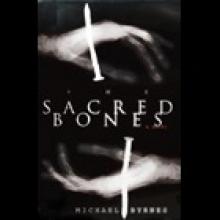 The Sacred Bones
The Sacred Bones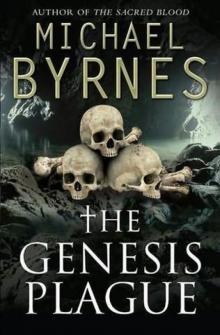 The Genesis Plague (2010)
The Genesis Plague (2010)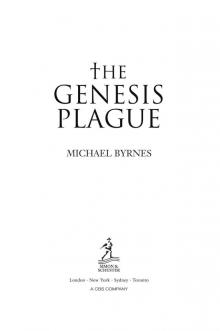 The Genesis Plague
The Genesis Plague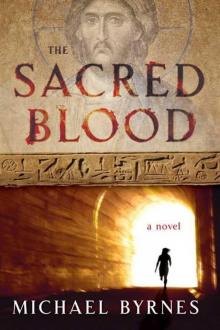 The Sacred Blood
The Sacred Blood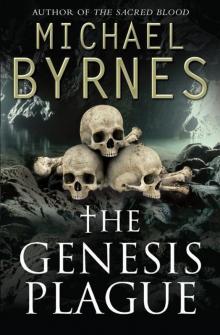 The Genesis Plague tf-1
The Genesis Plague tf-1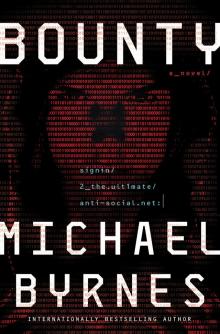 Bounty
Bounty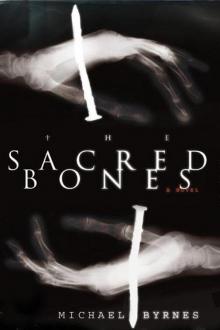 Sacred Bones : A Novel
Sacred Bones : A Novel